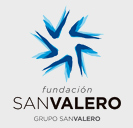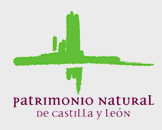The final outcomes of this project are the following ones:
- Validation of a methodology for green ICT Plans to reduce carbon footprint of organisations.
Taking into account previous experiences such as the Australian or British Green ICT strategies and the plans developed under the Green Digital Charter, the LIFE Green TIC project has developed its own guidelines with steps and minimum requirements to be followed when carrying out a Green ICT Action Plan or Strategy.
This methodology has been applied and validated by each of the project partners in their own organizations.
The document explaining the whole task and the methodology features the stages and minimum contents necessary for the elaboration of Green ICT Action Plans and the different ICT product groups that should be analysed.
Here are the minimum contents defined under this methodology:
- Inventory and analysis of ICT infrastructure and equipment.
- Gathering of data on energy consumption and CO2 emissions.
- Analysis of the organization’s ICT policy.
- Green ICT policies proposal for the organization.
- Monitoring system for the energy consumption.
- Lay out of Green ICT Policy Indicators.
Under the methodology and procedure mentioned above, each LIFE GreenTIC project partner has developed its own Green ICT Action Plan or Strategy
- Over 50% energy consumption reduction and 100 CO2 ton reduction demonstrated for the 3 pilot actions in comparison to the current energy demands.
Throughout these actions, the LIFE Green TIC project has helped demonstrate the high potential for reduction of energy consumption that can be achieved with a responsible use of information and communication technologies. As a whole, the project's actions have helped to achieve an annual emissions reduction of 218 tonnes of CO2 equivalent.
The main objective of the project was to reduce 50% of energy consumption by each of the partners trough the implementation of Pilot Actions, Green ICT Plans, Green Procurement and Best Practices.
The most important energy saving is the one reached in the FSV virtual campus (95%), whereas virtualization of Data Centre and desktops helped to reach 31% savings in FPNCYL and the Smart Street LED Lightning 75% in Ayto. Logroño.
Thus, in the application of ICT to the administration and education fields, by implementing paperless, e-administration and virtual campus policies, the San Valero Group has managed to reduce CO2 emissions by about 154 tonnes in two years; 31,4 tonnes as 110 vocational training students switched from classroom to online education. At the University, FSV has reduced its emissions in 65,6 tonnes due to the application of the virtual campus to 2.042 students, and 56 tonnes through the implementation of the Green ICT Action Plan.
As for Logroño City Council, it has achieved annual savings of about 51 tonnes of CO2 by applying rationalization and modernization policies for computer equipment as well as for printers and paper usage, and changing conventional street lightning by LED technology. Emissions reduction in the smart street have reached 75%. On the other hand, emissions reduction in paper and in ICT infrastructure has been lower. Taking into account all the consumptions, the average reduction of the project is 20%.
Finally, the application of virtualization policies done in the PRAE building by FPNCYL, both in its Data Centre and in its desktops, has achieved energy savings of about 31%, therefore, more than 18.500 kWh per year, and a reduction of CO2 emissions of about 13,2 tonnes within two years of implementation of the pilot action.
- Green ICT Public Procurement Guide
Since the early stages, the LIFE Green TIC project technical team has gathered information and documentation regarding green and sustainable procurement of ICT equipment and devices.
It included applicable legislation, standards, eco-labelling programmes, sustainable or green procurement and outsourcing guides, literature on analysis and evaluation of such systems and on their (legal, technical, etc.) use options, examples of application, best practices, and call for tenders, etc.
All these preparation tasks had led to the creation of a Green ICT Procurement Manual, as well as tender specifications standard templates for the purchase of computers, servers and printers.
Four training workshops were organized in February and March 2016, addressed to public employees, ICT companies and people in charge of ICT in schools and were intended to make them aware of the application of green criteria in the procurement of ICT equipment. In these workshops, held in Valladolid, Zaragoza, Madrid and Logroño, both the Manual and the tender specifications standard templates were presented to 133 attendees
- Best Practices Manual for green and smart use of ITC
The Project has contributed to the development of a "Best Environmental Practices Guide for ICT Users" which contains various recommendations for them to make a more intelligent and responsible use of different equipment and devices, reducing energy consumption, prolonging their lifecycle and, consequently, reducing their carbon footprint.
Sixty good practices have been identified and are of application for the categories below:
- Computers and monitors (13)
- Smarthphones, tablets and the like (23)
- Printing and imaging equipment (15)
- Information management, e-mails, etc. (9)
Four infographics summarizing the messages and main recommendations stated in the Best Environmental Practices Guide for ICT Users have been developed (in Spanish and English), as this is considered to be a highly effective tool for spreading information through social networks.
See the english versión of the Best Practices Guide and of the infographics http://www.lifegreentic.eu/en/documentos/8
- Promoting more than 50 ICT ideas and solutions for environmental governance through social networks and co-working.
After more than a year of publications, posts and dissemination of activities related to the project, the Laboratory completed its development with a final event called "GreenTIC-Emprende".
From the very beginning, this action was considered essential to accomplish one of the main objectives of the laboratory: to get ideas and proposals from young students and entrepreneurs in order to achieve a more efficient use of ICT and to put ICT at the service of environmental management and information, enabling ICT and environmental services.
The following figures summarize the results of participation in the competition:
- 40 participating teams.
- About 150 young people (under 30 years), forming part of such teams.
- Different origins within the national territory: Castilla y León, Madrid, Aragón and Cataluña.
- 98 proposals, 18 of which were projects, 13 actions and 67 shared ideas (the competition allowed participation in three different categories depending on the scope of the proposal).
- Creating a network of more than 100 entities implementing Green ICT policies
The “Green TIC Commitment Charter” was designed to boost the socio-economic impact of LIFE Green TIC project. This specific initiative focus on the dissemination of knowledge to help to implement measures that contribute to reduce the ICT carbon footprint.
The awareness raising among organisations in relation to energy and resources consumption of their ICT infrastructure could lead to the adoption of measures to reduce those values by improving efficiency and at the same time, competitiveness.
By signing the “Green TIC Commitment Charter”, every organisation can decide the level of commitment (number and complexity of measures proposed) according to their own policies (corporate social responsibility, environmental management) and to their budget availability.
At the same time, LIFE Green TIC project put at the signatories’ disposal a bunch of tools to help them implement and develop their own targets. Some of these tools are the methodology for drafting Green TIC strategies/plans, the green ICT purchasing manual or the good practices for ICT users. Information on the project has regularly been sent via e-mail to the signatories, together with other stakeholders or potential beneficiaries.
As a result of the campaign, 74 organisations have signed the Green TIC commitment Charter and among them public organisations (5 city councils, 1 provincial government, public foundations, public companies, 5 technological centres, 4 local or regional energy agencies) and private companies (ICT and environment sectors), associations (5 clusters of the ICT, energy efficiency and environment sectors), educational organisations and foundations. Most of them are Spanish but it must be highlighted that there are 5 signatories from Portugal and one from Peru.
The initiative was very useful to bring to light the commitment with fighting climate change that have many Spanish organisations, and more specifically the need to mitigate CO2 emissions coming from ICT activity. At the same time, this has been seen as an opportunity to reduce energy costs and to improve competitiveness or investment capacity (due to general costs reduction).
see english versión of the Commitment Charter http://www.lifegreentic.eu/en/document/green-ict-commitment
- Increasing information and awareness of 10.000 public employees, 15.000 students and 200 enterprises.
Dissemination and communication actions have enabled the participation in the project of:
- About 29.000 students, of which 2.152 directly in the Virtual Campus pilot action of FSV and 154 in the “GreenTIC-Emprende” competition. Indirect participants through social networks of the San Valero educational Group are more than 24.000.
- More than 20.000 civil servants and public bodies’ employees, of which 18.000 were direct target for best practices dissemination by the regional government (Junta de Castilla y León) and 500 by the Logroño City Council. Furthermore, 82 have been trained in Green Procurement of ICT and Best ICT Practices.
- More than 200 entrepreneurs and ICT sector professionals, of which 43 through the expert groups (project advisory groups), 74 through the signing of the “Green TIC Commitment Charter” and 90 in the training seminars on green procurement of ICT.
- More than 1.500 followers with a professional profile (ICT, environment, education and public authorities sectors) in the Twitter and Facebook project accounts.
- Dissemination actions meant for general public, mainly via mass-media and other high impact activities have reached near 5.000.000 people.
For the success of these dissemination activities and other technical actions, the implication of stakeholders and the networking developed with other organisations and European projects has been key. Among them:
- Cluster and ICT business associations: regional and local (AETICAL, AVEIN, AERTIC and TECNARA), national (ENERTIC) or international (GreenIT.fr).
- Smart cities and innovation networks such as RECI (Spanish Smart Cities Network by its Spanish acronym), INNPULSO (cities of science and innovation network), eSMARTCITY.es web portal or the Linköping (Sweden) City Council.
- In the educational field, San Valero Group students network, the web portal on education of Castilla y León (EDUCACYL) or the network of vocational training centres linked to the Spanish Association of IT professionals (ATI by its Spanish acronym).
- Other European projects such as Green Digital Charter, Green ProcA, LIFE Clim’Foot, Is IT Green or the collaboration with DG Connect (European Commission).




